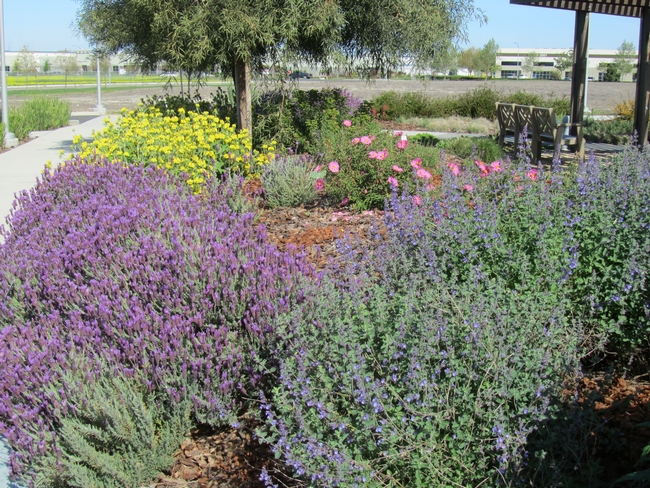Welcome to Landscape Lush - the Environmental Horticulture blog that is replacing the Green Notes newsletter. This new format will allow me to send more frequent, shorter articles on the latest in research, methods, and ideas on how to get the most out of gardens and landscapes large and small in California's unique climate, as well as recommend great plants for you to use. To ease into the new format, let's tackle the subject in the title.
For decades the concept of "drought-tolerant" has been discussed in summer-dry areas like ours. A drought-tolerant plant is one that survives when the water is cut off. That's it. It doesn't necessarily have to look good, and in fact it may survive by losing all its leaves, going dormant, and generally looking terrible in the garden. Sure, when you irrigate again it may revive, but in the meantime you are left with a pretty sad looking landscape. No one wants that.
Low-water plants, on the other hand, are those that are adapted to live through times of water scarcity without drastically changing the way they look. In fact, they may be so efficient at using water, avoiding heat, and keeping cool that they look great, and perhaps even keep blooming during the hottest, driest time of year. The old concept of xeriscaping as a garden filled with succulents and gravel has been replaced by Low-water Lush, the new standard for the California landscape. LUSH means growing vigorously with luxurious foliage, lavishly productive, fertile, thriving, and it is possible on low-water! We've seen it with our own eyes for the last 10 years in the UC Landscape Plant Irrigation Trials, (UC LPIT), but you've probably seen it in some of the emerging new gardens styles yourself.
How do you find plants to fill the Low-water Lush landscape? My first suggestion is to make a file of low-water trees, shrubs, groundcovers, and perennials for your area using the Water Use Classification of Landscape Species searchable database, often referred to as WUCOLS. From there, be willing to do some on-line searching for what you are interested in so you get an understanding of the eventual size and sun/shade preference of your favorites. Most garden centers and nurseries are now carrying lines of plants that are great performers on lower water levels, and the wholesale growers have dramatically expanded their low-water offerings. Independent garden centers will often order plants from these wholesalers for you if what you want is available.
Water restrictions aren't going away, and the droughts of the past will recur. Low-water landscaping is here to stay, so if you haven't already made the change, it's time to shift your focus to making all the landscapes you manage as water-efficient as possible. Fortunately, that doesn't have to mean they can't be lush.
Attached Images:
